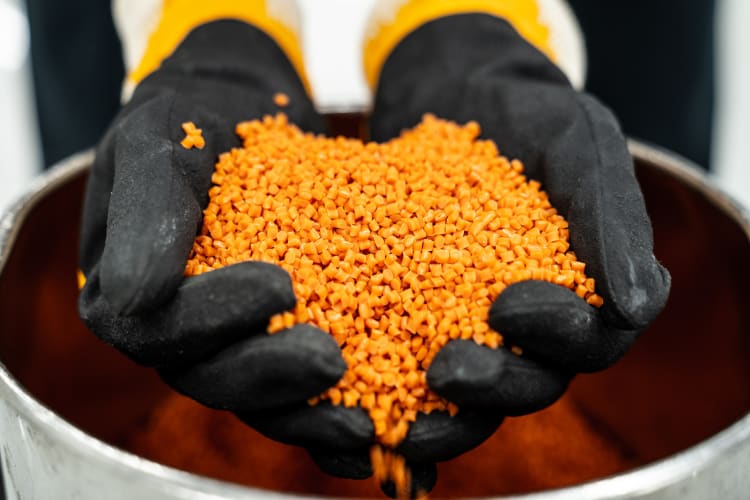Let's talk about what new products you offer to the plastics processing industry?
We are increasing our focus on sustainable products in our plastics offerings using bio-based or recycled raw materials. Our new variant of the composite Tepex is 100 percent based on biological raw materials. It combines fabrics made from the natural flax fibers with bio-based polylactic acid as a matrix material. We are now able to produce it to a level of quality suitable for large-scale production. The extremely strong material is suitable for use in sports articles, in the production of automotive interior parts and in electronics for case components. This Tepex grade can be recycled completely.
Another example are our Durethan brand polyamide-6 plastics. In the latest grade, 92 percent of the raw materials have been replaced by sustainable alternatives - and we are aiming for 100 percent already. LANXESS uses “green” cyclohexane from sustainable sources such as rapeseed oil or other biomass as raw material. The new grade is also reinforced with 60 percent by weight of glass fibers recycled from industrial glass waste. Most important for our customers: The new grade has the same properties as its fossil-based counterpart.
To label our most sustainable products, LANXESS will introduce the brand label “Scopeblue” It marks products that either consist of at least 50 percent circular (recycled or bio-based) raw materials or whose carbon footprint is at least 50 percent lower than the one of conventional products.
You touched on the topic of sustainable plastics. What is Lanxess doing in the energy and climate policy?
We want to become climate neutral by 2040. And we are serious about it. We already kicked off lighthouse projects to get there: In early 2021 we installed a plant for the neutralization of laughing gas at our site in Antwerp, Belgium. With this plant we are able to save 150,000 tons of CO2e per year. In 2024 this will increase by another 300,000 tons when launching the next stage. At our sites in India we will switch completely to renewable energy by 2024 as we have already done in Brazil. And we will also continue to phase-out the use of coal in our plants here in Germany.

It seems that your efforts have been appreciated. In the latest assessment by the renowned climate protection initiative CDP, the Group has made it into the “Climate A List” as one of 200 companies worldwide.
That’s right. It’s a great recognition of our efforts to fight against climate change. If you make it into the “Climate A List” you are among the top 2 percent of the more than 12,000 companies assessed by CDP. And I am proud that LANXESS is on the “Climate A List” for the fifth time this year. That encourages us even more.
And the last question. A month ago, Lanxess announced the transfer of its High Performance Materials (HPM) business unit to an independent legal corporate structure. For what purpose?
HPM is one of the leading suppliers of high-performance plastics. The materials are used primarily in the automotive, electrical and electronics industries. Electromobility in particular is a promising field of application for the LANXESS plastics, which are used predominantly for car bodies, battery housings and charging infrastructure.
As the global market for electromobility and new forms of mobility are developing very dynamically and are strategically rearranging itself they are creating many innovative alliances and partnerships. In order to get the most out of the growth opportunities in this market and to be able to act flexible, LANXESS decided to create a separate legal structure for the HPM business unit.
Agata Mojcner (Editorial team Plast Echo)



